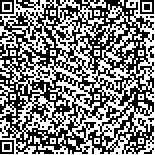郭凯锋,韩佩洁,伍卓强,等.早期肺康复干预联合俞募配穴法针刺治疗卒中相关性肺炎的疗效观察[J].中华物理医学与康复杂志,2023,45(11):971-975
扫码阅读全文

|
| 早期肺康复干预联合俞募配穴法针刺治疗卒中相关性肺炎的疗效观察 |
|
| |
| DOI:10.3760/cma.j.issn.0254-1424.2023.11.003 |
| 中文关键词: 针刺 俞募配穴 肺康复 肺功能 卒中相关性肺炎 |
| 英文关键词: Acupuncture Back-shu acupoint Front-mu acupoint Pulmonary rehabilitation Lung function Stroke-associated pneumonia |
| 基金项目:广东省中医药管理局项目(20221299);广州市科技计划项目(202201011729);广州市番禺区医疗卫生项目 (2020-Z04-087) |
|
| 摘要点击次数: 3648 |
| 全文下载次数: 3743 |
| 中文摘要: |
| 目的 观察早期肺康复干预联合俞募配穴法针刺治疗卒中相关性肺炎(SAP)的疗效。 方法 采用随机数字表法将80例SAP患者分为观察组及对照组,每组40例。2组患者均给予常规干预,包括肺炎对证治疗、营养支持、降脂、抗感染等,对照组患者在此基础上辅以俞募配穴法针刺,观察组则辅以俞募配穴法针刺及肺康复干预。于治疗前、治疗14 d后分别检测2组患者用力肺活量(FVC)、第1秒用力呼气量(FEV1)、峰值流速(PEF)、白细胞计数(WBC)、C反应蛋白(CRP)及降钙素原(PCT)含量,同时采用中医证候积分对2组患者咯痰、气短、肺啰音、咳嗽、发热、乏力等指标进行评分;记录2组患者住院期间抗生素持续使用时间及ICU 住院时间。 结果 治疗后观察组总有效率(97.5%)明显高于对照组(85.0% ,P<0.05),住院期间观察组抗生素持续使用时间、ICU住院时间均较对照组明显缩短(P<0.05);治疗后2组患者FVC、FEV1、PEF、WBC、CRP、PCT等指标均较治疗前明显改善(P<0.05),并且观察组治疗后FVC[(3.10±0.68)L]、FEV1[(2.79±0.67)L]、PEF[(6.01±0.78)L/min]亦显著高于对照组组水平(P<0.05),WBC[(9.38±1.91)109·L-1]、CRP[(12.91±4.26)ρ/mg·L-1]、PCT[(0.41±0.17)ρ/mg·L-1]及中医证候总积分[(6.79±5.38)分]则显著低于对照组水平(P<0.05)。 结论 早期肺康复干预联合俞募配穴法针刺对SAP患者具有确切疗效,能显著缩短抗生素持续使用时间及ICU住院时间,同时在改善患者肺功能、降低炎性因子水平、减轻临床症状方面效果显著。 |
| 英文摘要: |
| Objective To observe any therapeutic effect of combining early pulmonary rehabilitation training with acupuncture at the back-shu and front-mu acupoints in treating stroke-associated pneumonia (SAP). Methods Eighty SAP patients were randomly divided into a treatment group and a control group, each of 40. Both groups were given routine symptomatic treatment for pneumonia, nutritional support, lipid-lowering and anti-infection measures, as well as acupuncture at the back-shu and front-mu acupoints. The treatment group additionally received pulmonary rehabilitation training. Before and after 14 days of the treatment, both groups were evaluated in terms of their forced vital capacity (FVC), forced expiratory volume in the first second (FEV1), peak flow rate (PEF), white blood cell count (WBC), C-reactive protein (CRP), and procalcitonin (PCT). Chinese medicine (TCM) scores for expectoration of phlegm, shortness of breath, pulmonary rales, cough, fever and weakness were also assigned. The duration of antibiotic use and intensive care unit (ICU) stay were compared between the two groups. Results Treatment efficacy was significantly higher in the treatment group (97.5%) than in the control group (85.0%). The treatment group′s average duration of antibiotic use and ICU stay were significantly shorter than in the control group. The treatment improved the average FVC, FEV1, PEF, WBC, CRP and PCT of both groups significantly leaving the average FVC and PEF of the treatment group significantly higher than the control group′s average, but its average WBC, CRP, PCT and the total TCM syndrome score significantly lower. Conclusions Combining early pulmonary rehabilitation training with acupuncture at the back-shu and front-mu acupoints has a definite therapeutic effect on SAP patients. It can significantly shorten the use of antibiotics and ICU stay, promote the recovery of lung function, reduce inflammation and relieve clinical symptoms. |
|
查看全文
查看/发表评论 下载PDF阅读器 |
| 关闭 |
|
|
|